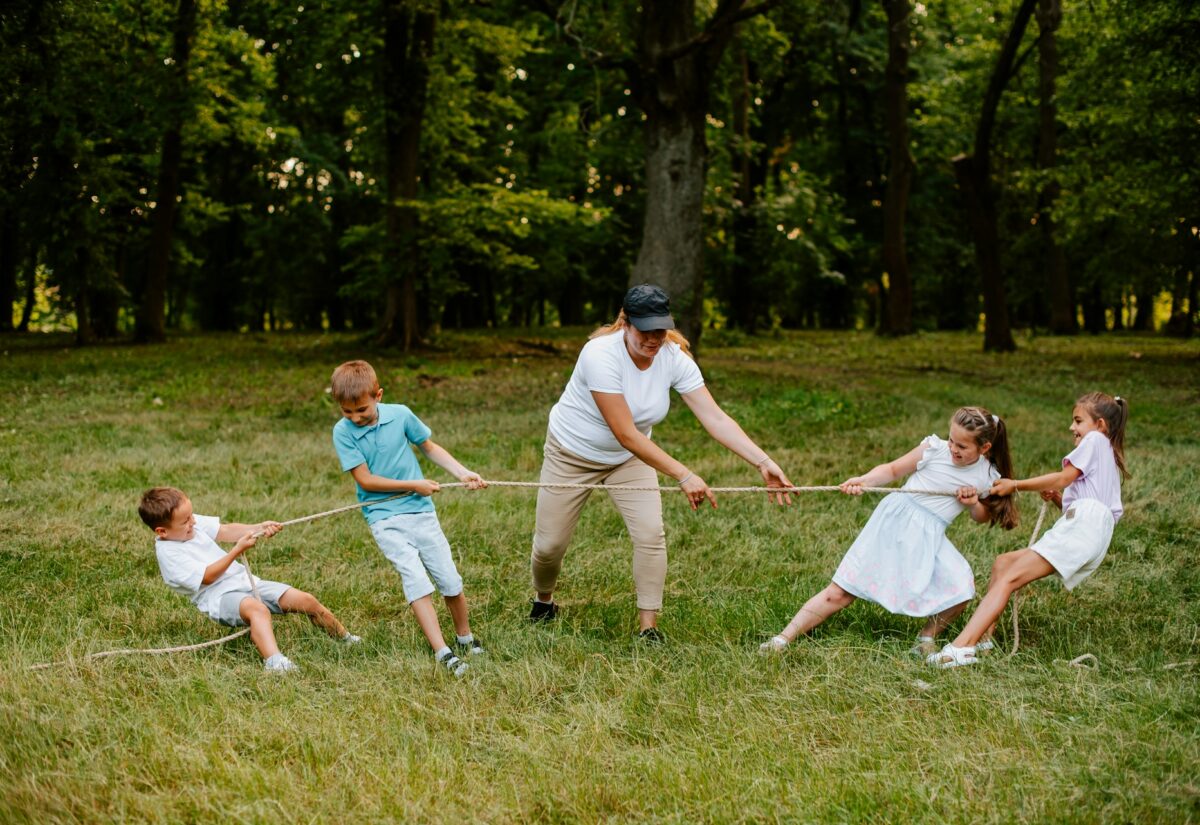Ancient Greek Childhood Games Still Played Today (With Different Rules)
- Jennifer Still
- June 11, 2025
 Unsplash/Karolina Hliznitsova
Unsplash/Karolina HliznitsovaWhen we think of Ancient Greece, we usually picture philosophers, marble temples, and Olympic athletes. However, children back then were also just that—children. And like kids throughout history, they came up with plenty of ways to entertain themselves. What’s surprising is how many of those games are still around today, just with new names or slightly different rules.
From chasing games to spinning toys, many childhood staples have roots in the ancient world. Here are some of the most popular Ancient Greek games that have survived the centuries, though today’s kids probably have no idea just how old their playground favourites really are.
Knucklebones (modern jacks)
One of the oldest known children’s games in Ancient Greece was astragaloi, or knucklebones. It was played using the ankle bones of sheep or goats, though later versions used carved stones or metal. Players would toss and catch the bones in various sequences—sound familiar? It’s essentially an ancient version of jacks.
In some versions, one bone was tossed into the air while the others were quickly picked up. The goal was speed, coordination, and precision. Ancient Greeks didn’t just play for fun, either—knucklebones were also used in divination and gambling. Today’s rubber ball and plastic jacks set is a far cry from goat bones, but the core mechanics haven’t changed much.
Ephedrismos (piggyback dodge)
Ephedrismos was part game, part challenge. One child would carry another on their back, and together they’d try to hit a target, often a rock, with a small ball or stone. If they missed, they’d switch roles. It sounds a bit chaotic, but it blended teamwork, balance, and a bit of light-hearted competition.
The spirit of this game lives on in modern piggyback races or dodgeball variations where one player is ‘riding’ another. The ancient version added an extra twist of aiming skill and rotation of roles, keeping things moving (and probably leading to plenty of tumbles).
Ball games (the early ancestors of football and catch)
Ancient Greek kids played numerous ball games using handmade balls stuffed with rags, hair, or even animal bladders. One game, episkyros, resembled a very early form of football or rugby. Teams would try to move the ball across a marked field while avoiding tackles or interceptions.
Another, called aporrhaxis, was more like bounce and catch. Players would keep a ball bouncing off the ground while counting how many times it hit without stopping. While these games weren’t codified like modern sports, the fundamentals of teamwork, passing, and scoring goals were already there.
Hide and seek
Believe it or not, hide and seek has been around since at least ancient Greece. Known as apodidraskinda, the game involved one child covering their eyes while others hid. After a count, the seeker would try to find the others—pretty much exactly how kids still play it today.
The biggest difference is that it might have had a ritualistic or storytelling aspect at the time, tied to mythology or seasonal traditions. Still, the core mechanics—hide, seek, run—haven’t changed in millennia.
Hoop rolling
Rolling a hoop along the ground with a stick was a popular game in Ancient Greece, especially for older children. Called trochos, the hoop was often made of metal and guided by a stick or even bare hands. It required focus, speed, and a good sense of balance.
This game evolved into versions seen in Victorian Britain and even modern playgrounds, where hula-hoops or toy wheels take centre stage. While kids today might not race hoops down the street, the instinct to chase and steer something in motion is still hardwired into play.
Tug of war
Ancient Greek children also played a version of tug of war, usually with a rope or long cloth. It tested strength and teamwork and was sometimes part of school gymnasium exercises. While it may have had more of a structured or symbolic element back then, it was still fundamentally a test of who could pull hardest. Today’s party and sports day classic hasn’t changed much, though we’ve traded sandals and tunics for trainers and school PE kits.
Spinning tops
Greek children made spinning tops out of wood, ceramic, or bone. Called strombos, these toys were spun by hand or with a string and were often painted or carved with patterns. Watching them spin was mesmerising—and sometimes they were used in light gambling or trick competitions. Spinning tops are still popular in many cultures, and modern versions include everything from simple plastic toys to complex Beyblades. The joy of watching a top whirl across the floor clearly hasn’t lost its appeal.
Catching games and tag
Variations of tag were common in Ancient Greece, known under several names including chytrinda. Children would chase each other in designated areas, tapping or catching one another to switch roles. Some versions involved bases, safe zones, or objects to tag with. Tag, stuck-in-the-mud, and other chasing games owe a lot to these early versions. The combination of movement, alertness, and quick thinking made them perfect for children of any era.
Game of five stones
Similar to knucklebones but simpler, five-stone games were also popular. Players would throw and catch small stones in patterns, requiring rhythm and focus. Versions of this game still exist across the world, including in parts of Asia, where it’s known as five stones or gobs.
In the UK, children often play with small plastic or rubber pieces, but the structure is remarkably similar. It’s a great example of how simple games endure because they’re easy to learn but hard to master.
Many of these Ancient Greek games were never written down formally but were passed on through play, just like children do today.
What’s striking is how little the essence of childhood fun has changed. Whether it was sheep bones, handmade balls, or simple races, kids thousands of years ago weren’t all that different—they just had different materials and fewer rules.
And while the stakes may have changed, the laughter and energy of playgrounds across the centuries are surprisingly alike. If you’ve ever watched children invent a game on the spot, you’re witnessing something ancient in action.



